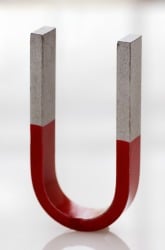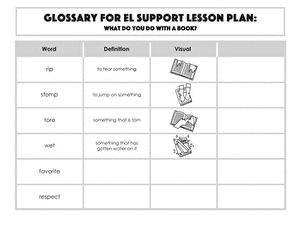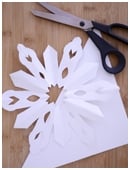Science project
Regeneration: Do Planaria Really Do It?
Difficulty of Project
Medium
Cost
$20 - $30
Safety Issues
Wear safety glasses, apron and plastic gloves.
Material Availability
Materials are readily available from Carolina Biological Supply and the local supermarket.
Approximate Time Required Completing the Project
2 months. This includes collection, recording and analysis of data, summary of results and completion of bibliography.
Objectives
To determine whether freshwater Planarian (flatworms) reproduce asexually by regeneration and whether the size of the segment will determine if regeneration will take place.
Materials and Equipment Required
- Planaria (Dugesia dorotocephala )
- glass containers
- 12 glass vials
- declorinated tap water
- raw beef liver
- a sharp knife or razor blade
- a glass plate or glass cover slip
- labels
- a pen
- plastic gloves
- apron or old shirt as lab coat
- safety glasses
- paper towels
Introduction
Background Information
On the information level, this experiment serves to acquaint students with current information on the concept of regeneration, an asexual process of reproduction and the various studies that have been conducted on the process of regeneration using the flatworm, Planaria. For over a century, the use of planaria as a basic specimen has lead to tremendous progress in the areas of genetics and currently in stem cell research. The amazing powers of regeneration demonstrated by freshwater planarians has intrigued scientists and resulted in an explosion of studies. Equipped with this investigation and knowledge the students too are both excited and motivated to not only read but conduct further research in this area.
This science fair experiment also serves to acquaint students with the essential processes of sciencing such as the importance of the use of a control, of identifying dependent and independent variables, of data collection, of pictorial and or graphic presentation of data and of being able to make better judgments as to the validity and reliability of their findings. They take on the role of scientists and in the process they learn to act as one.
Research Terms
- flat worms
- Planaria
- regeneration
- asexual reproduction
- anterior
- posterior
- Turbellaria
- free living flatworms
- parasitic flatworms
- hermaphrodite
Research Questions
- What are Planaria?
- What are flatworms?
- Where are they found?
- Why are they considered simple and primitive?
- Why are they the subjects of a variety of experiments?
- Of what practical value are studies of regeneration in Planaria?
Terms, Concepts and Questions to Start Background Research
- What is a control? A control is the variable that is not changed in the experiment.
- What purpose does a control serve? It is used to make comparisons as to what changed or possibly caused the change.
- What are variables? Variables are factors that can be changed in an experiment.
- What is an independent variable? The independent variable is the one that is changed in the experiment.
- What is a dependent variable? The dependent variable is the one that changes as a result of the change in the independent variable.
Charting and or Graphing Data
In each section of the experiment, use charts to display the obtained data such the following sample:
Charting Your Observations: Planaria Regeneration
Question: Will the size of the segment determine whether the organism will regenerate? Will the smaller pieces fail to regenerate?
|
Specimens |
Week 1 |
Week 2 |
Week 3 |
Week 4 |
|
A1 |
|
|
|
|
|
A2 |
|
|
|
|
|
A3 |
|
|
|
|
|
B1 |
|
|
|
|
|
B2 |
|
|
|
|
|
B3 |
|
|
|
|
|
C1 |
|
|
|
|
|
C2 |
|
|
|
|
|
C3 |
|
|
|
|
|
D1 control |
|
|
|
|
|
D2 control |
|
|
|
|
Experimental Procedure
- State the problem you are going to investigate.
- Create and reproduce the data sheets you will use to record your observations.
- Gather all your materials.
- Put on your safety glasses, plastic gloves and apron.
- When you receive the Planaria, store them in glass containers filled with declorinated tap water. Feed them with beef liver twice a week. Keep them in a warm room, 68degrees F.
- When you are ready to begin, select 10 glass containers and label them as A1, A2, A3, B1, B2, B3, C1, C2, C3 and D1 and D2. Fill all of the containers to the ¾ level with declorinated tap water.
- You are going to use four sets of planaria, each set made up of two planaria. Place the planarian on a glass slide and use a sharp blade or knife for the cutting. The first set of two will be cut in half and placed into containers A1 and A2. The second set of two will be cut in thirds and place in containers B1 and B2. The third set will be cut into fourths and placed in containers C1and C2. The last set will remain whole and placed in Di and D2. The fourth set is your control.
- Keep all of the specimens in a warm room and replenish the beef liver twice a week.
- You may wish to take photos each week. Continue and record your observations on a weekly basis for one month.
- Analyze the collected data and finalize your conclusion.
- Prepare your report and include all of the following: a clear statement of the problem, your hypothesis, namely what did you predict would occur, and a list of the materials used. Include the safety precautions taken. Describe the procedures used. Include all the data that were gathered. Include all charts. Explain the purpose of the control. Formulate your conclusions. For dramatic value, you may include photos of the materials used or of you in the process of conducting this investigation. Include a bibliography of sources you used. You may wish to assess what you did and describe what you would do differently if you were to do this project again. You may wish to expand this research next year. The process of regeneration is not only intriguing but may yield extensive benefits to the prolongation of life. What other studies might you conduct for this purpose?
Bibliography
Goss, R. J. 1969. Principles of Regeneration. Academic Press, New York.
Education.com provides the Science Fair Project Ideas for informational purposes only. Education.com does not make any guarantee or representation regarding the Science Fair Project Ideas and is not responsible or liable for any loss or damage, directly or indirectly, caused by your use of such information. By accessing the Science Fair Project Ideas, you waive and renounce any claims against Education.com that arise thereof. In addition, your access to Education.com's website and Science Fair Project Ideas is covered by Education.com's Privacy Policy and site Terms of Use, which include limitations on Education.com's liability.
Warning is hereby given that not all Project Ideas are appropriate for all individuals or in all circumstances. Implementation of any Science Project Idea should be undertaken only in appropriate settings and with appropriate parental or other supervision. Reading and following the safety precautions of all materials used in a project is the sole responsibility of each individual. For further information, consult your state's handbook of Science Safety.













